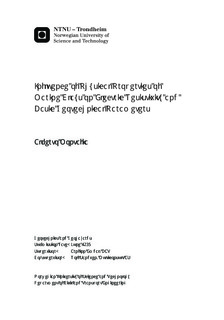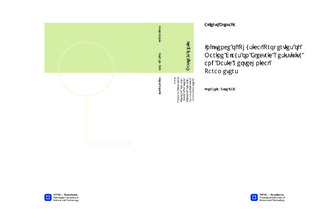| dc.contributor.advisor | Emdal, Arnfinn | nb_NO |
| dc.contributor.advisor | Sandven, Rolf | nb_NO |
| dc.contributor.author | Montafia, Alberto | nb_NO |
| dc.date.accessioned | 2014-12-19T11:32:21Z | |
| dc.date.available | 2014-12-19T11:32:21Z | |
| dc.date.created | 2013-10-29 | nb_NO |
| dc.date.issued | 2013 | nb_NO |
| dc.identifier | 660428 | nb_NO |
| dc.identifier | ntnudaim:9288 | nb_NO |
| dc.identifier.uri | http://hdl.handle.net/11250/232697 | |
| dc.description.abstract | Adding resistivity measurements to classical cone penetration tests (CPTU) provides further information useful for stratigraphy interpretation. Resistivity CPTUs (R-CPTU) have already been used for quick clay mapping, but there are still uncertainties related to the interval of resistivity values corresponding to quick clays and to whether resistivity is able to give information on geotechnical parameters that can then be utilized in engineering design. The results of four R-CPTU soundings, carried out in sites characterized by leached clays with different properties in eastern and central Norway, were complemented with their corresponding laboratory data in order to get an improved definition of the range of values associated to each soil type. Chemical analyses of the pore water and salinity measurements were also undertaken as to improve the understanding of the physical phenomena that regulate and determine soil?s bulk resistivity. It was observed that the role of salinity becomes less important in this process as salt content itself reaches very low values, and below a certain threshold concentration it appears as if the contribution of salinity is almost negligible. As long as the feedback that resistivity gives in distinguishing sensitive clay from quick clay is cencerned, it appeared as if the differences in mechanical properties of the two soil types were not evident enough to reflect into different R-CPTU measurements. More successful results were achieved when soil types with more dissimilar characteristics were considered. The diffusion of R-CPTU in geotechnical investigation practice in Norway is still limited, but it is gaining in popularity due to the very little additional effort required to acquire this information. The potentiality of R-CPTU will be better exploited once that more data from sites with leached, unleached and eventually also non-marine clays will be collected. | nb_NO |
| dc.language | eng | nb_NO |
| dc.publisher | Institutt for bygg, anlegg og transport | nb_NO |
| dc.title | Influence of Physical Properties of Marine Clays on Electric Resistivity and Basic Geotechnical Parameters | nb_NO |
| dc.type | Master thesis | nb_NO |
| dc.source.pagenumber | 148 | nb_NO |
| dc.contributor.department | Norges teknisk-naturvitenskapelige universitet, Fakultet for ingeniørvitenskap og teknologi, Institutt for bygg, anlegg og transport | nb_NO |

